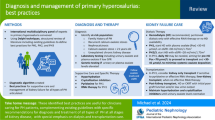Abstract
The intuitive assumption that gallstones will rapidly recur in all patients is clearly incorrect. At least 50% of patients do not develop stones within three to five years of complete dissolution, and the risk may decrease after the first two or three years. This is not so surprising when one considers the complexity of the pathogenic process. Bile must be sufficiently supersaturated with cholesterol, an imbalance in nucleating and antinucleating factors must occur, at least transiently, and, for some patients, a defect in gallbladder emptying may be necessary. Occasionally, pathogenic mechanisms that had been present, eg, estrogens, obesity, or medications such as clofibrate, may no longer be active. The best method to reduce the risk of recurrence is to reverse one or more of the essential pathogenic mechanisms. Desaturating bile in cholesterol by oral therapy with a bile acid such as ursodiol should be effective. A search for other safe, effective, and cost-effective approaches persists, eg, for novel bile acids resistant to bacterial degradation and for various dietary regimens. Alteration of cholesterol nucleation with nonsteroidal antiinflammatory agents is also under investigation. In addition, enhancement of gallbladder emptying is an interesting approach that is worth studying. If stones do recur, the course of action is not always clear. Recurrent stones are usually “silent,” and we do not usually treat asymptomatic stones. These small cholesterol stones are temptingly easy to dissolve, however. At least in those patients whose level of surgical risk would be high if symptoms developed, prophylactic dissolution therapy may be desirable.
Similar content being viewed by others
References
Thistle JL, Schoenfield LJ: Induced alterations in composition of bile of persons having cholelithiasis. Gastroenterology 61:488–496, 1971
Allen MJ, Borody TJ, Bugliosi TF, May GR, LaRusso NF, Thistle JL: Rapid dissolution of gallstones by methyl tertbutyl ether. N Engl J Med 312:217–220, 1985
Thistle JL, May GR, Bender CE, Williams HJ, LeRoy AJ, Nelson PE, Peine CJ, Petersen BT, McCullough HE: Dissolution of cholesterol gallbladder stones using methyl tertbutyl ether administered by percutaneous transhepatic catheter. N Engl J Med 320:633–639, 1989
Sackman M, Ippisch E, Sauerbruch T, Holl J, Paumgartner G: Early gallstone recurrence after successful Shockwave therapy. Hepatology 8:1221, 1988
Somerville KW, Rose DH, Bell GD, Ellis WR, Knapp DR: Gallstone dissolution and recurrence: Are we being misled? Br Med J 284:1295–1297, 1982
Lanzini A, Jazrawi RP, Kupfer RM, Maudgal DP, Joseph AEA, Northfield TC: Gallstone recurrence after medical dissolution. An overestimated threat? J Hepatol 3:241–246, 1986
O'Donnell LD, Heaton KW: Recurrence and re-recurrence of gall stones after medical dissolution: A longterm follow up. Gut 29:655–658, 1988
Dowling RH, Gleeson DC, Hood KA, Ruppin DC, British-Belgian Gallstone Study Group: Gallstone recurrence and postdissolution management.In Bile Acids and the Liver. G Paumgartner, A Stiehl, W Gerok (eds). Lancaster, England: MTP Press 1987, pp 355–367
Gleeson D, Ruppin DC, British Gallstone Study Group: Discrepancies between cholecystography and ultrasonography in the detection of recurrent gallstones. Hepatology 1:597–607, 1985
Thistle JL, Yu PYS, Hofmann AF, Ott BJ: Prompt return of bile to supersaturated state followed by gallstone recurrence after discontinuance of chenodeoxycholic acid therapy. Gastroenterology 66:789, 1974 (abstract)
Holzbach RT, Halpern Z, Dudley MA, Lynn MP, Breuer AC: Biliary vesicle aggregation and cholesterol crystal nucleation: Evidence for a coupled relationship.In Bile Acids and the Liver. G Paumgartner, A Stiehl, W Gerok (eds). Lancaster, England: MTP Press 1987, pp 301–316
Messing B, Bories C, Kunstlinger F, Bernier JJ: Does total parenteral nutrition induce gallbladder sludge formation and lithiasis? Gastroenterology 84:1012–1019, 1983
Fisher RS, Stelzer F, Rock E, Malmud LS: Abnormal gallbladder emptying in patients with gallstones. Dig Dis Sci 27:1019–1024, 1982
Pomeranz IS, Shaffer EA: Abnormal gallbladder emptying in a sub group of patients with gallstones. Gastroenterology 88:787–791, 1985
Scholz DG, Chapman NJ, Brown ML, O'Connor MK, Zinsmeister AR, Thistle JL: Gallbladder motility in patients with and without gallstone recurrence. Gastroenterology (abstract) 96:A657, 1989
Bennion LJ, Knowler WC, Mott DM, Spagnola AM, Bennett PH: Development of lithogenic bile during puberty in Pima Indians. N Engl J Med 300:873–876, 1979
Mok HYI, Druffel ERM, Rampone WM: Chronology of cholelithiasis. Dating gallstones from atmospheric radiocarbon produced by nuclear bomb explosions. N Engl J Med 314:1075–1077, 1986
Gracie WA, Ransohoff DR: The natural history of silent gallstones: The innocent gallstone is not a myth. N Engl J Med 307:798–800, 1982
Bennion LJ, Grundy SM: Risk factors for the development of cholelithiasis in man. N Engl J Med 299:1221–1227, 1978
Broomfield PH, Chopra R, Sheinbaum RC, Bonorris GG, Silverman A, Schoenfield LJ, Marks JW: Effects of ursodeoxycholic acid and aspirin on the formation of lithogenic bile and gallstones during loss of weight. N Engl J Med 319:1567–1572, 1988
Logan GM, Duane WC: Lovastatin in combination with ursodeoxycholic acid lowers cholesterol saturation index of gallbladder bile more than either agent alone. Gastroenterology 96:A623, 1989
Author information
Authors and Affiliations
Rights and permissions
About this article
Cite this article
Thistle, J.L. Postdissolution gallstone recurrence. Digest Dis Sci 34 (Suppl 12), S44–S48 (1989). https://doi.org/10.1007/BF01536662
Received:
Accepted:
Issue Date:
DOI: https://doi.org/10.1007/BF01536662




